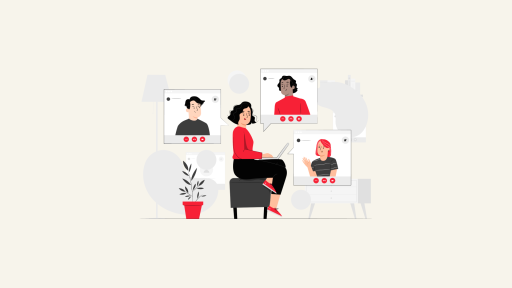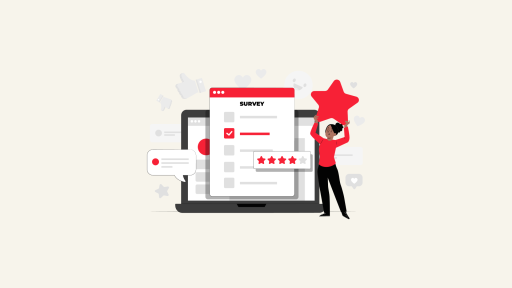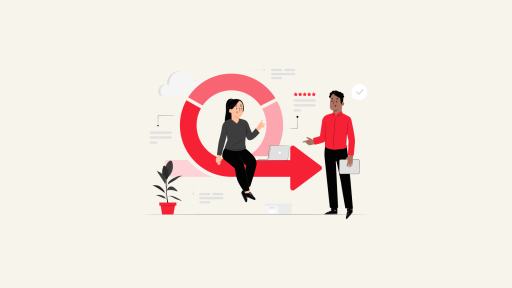Introduction
Organizational culture models are pivotal in shaping a company’s identity, behavior, and success. It’s the invisible force that guides employees, influences decision-making, and defines the company’s overall personality. Various organizational culture models have been developed to comprehend and manage this intricate aspect. In this article, we’ll delve into some prominent models that help decode the nuanced world of organizational culture.
Organizational Culture Models:
1. Hofstede’s Cultural Dimensions Theory:
Geert Hofstede’s cultural dimensions theory is a comprehensive framework for understanding cultural differences across different societies and organizations. The six dimensions are:
- Power Distance: This dimension explores the extent to which less powerful members of organizations or institutions accept and expect an unequal distribution of power.
- Individualism vs. Collectivism: It measures how individuals are integrated into groups. Individualistic cultures emphasize personal achievements and independence, while collectivistic cultures prioritize group harmony and cooperation.
- Masculinity vs. Femininity: This dimension reflects the distribution of emotional roles between genders. Masculine cultures value assertiveness, competition, and material success, while feminine cultures prioritize cooperation, modesty, and quality of life.
- Uncertainty Avoidance: It assesses the extent to which a society or organisation is comfortable with ambiguity and uncertainty. High uncertainty avoidance cultures seek rules and structure, while low uncertainty avoidance cultures embrace flexibility and adaptability.
- Long-Term Orientation vs. Short-Term Normative Orientation: This dimension focuses on the extent to which a society values long-term commitments and perseverance versus short-term goals and immediate gratification.
- Indulgence vs. Restraint: It was later added to Hofstede’s model, representing the degree to which a society allows relatively free gratification of basic and natural human desires related to enjoying life and having fun.
2. The Competing Values Framework (CVF):
The Competing Values Framework identifies four organizational culture types:
- Clan Culture: Characterized by a friendly and collaborative working environment. It values flexibility, discretion, and internal focus.
- Adhocracy Culture: Emphasizes innovation, risk-taking, and entrepreneurial spirit. It is flexible, creative, and outwardly focused.
- Market Culture: Driven by competition and results. It values achievement, competition, and external focus.
- Hierarchy Culture: Prioritizes stability, structure, and control. It values efficiency, predictability, and an internal focus.
Understanding the dominant culture helps organisations align their strategies and foster a culture that supports their goals.
3. Schein’s Organizational Culture Model:
Edgar Schein’s model involves three levels:
- Artifacts and Behaviors: Visible aspects such as dress code, office layout, and rituals that represent the surface-level culture.
- Espoused Values: Stated beliefs, philosophies, and norms. They are the declared values and strategies of the organization.
- Basic Underlying Assumptions: Unconscious beliefs and values that are taken for granted. These shape employee behavior and are often challenging to identify without deeper analysis.
Schein’s model encourages organizations to explore the deeper levels of culture to understand the fundamental assumptions guiding their actions.
4. Denison’s Organizational Culture Model:
Denison’s model focuses on four core traits that contribute to high-performing organizations:
- Involvement: The degree to which employees are engaged, empowered, and committed to the organization.
- Consistency: The alignment between the organization’s espoused values and its actual practices.
- Adaptability: The ability to respond and adjust to external changes and challenges.
- Mission: The clarity and alignment around the organization’s purpose and direction.
This model helps organizations assess their cultural strengths and weaknesses, providing insights into areas for improvement.
5. The OCAI (Organizational Culture Assessment Instrument):
The OCAI is a practical tool developed by Cameron and Quinn to assess and change organizational culture. It involves:
- Clan Culture: Emphasizes collaboration and teamwork.
- Adhocracy Culture: Encourages innovation and risk-taking.
- Market Culture: Values competitiveness and achievement.
- Hierarchy Culture: Prioritizes stability and control.
By engaging employees in the assessment process, the OCAI fosters a shared understanding of existing and desired cultures, facilitating cultural transformation.
6. Cameron and Quinn’s Levels of Organizational Culture:
Building on their Competing Values Framework, Cameron and Quinn introduced the idea of levels within the organizational culture. These levels include the:
- Visible Artifacts: Similar to Schein’s model, this level encompasses the observable elements of culture.
- Espoused Values: Reflects the stated values and beliefs of the organization.
- Basic Assumptions: Like Schein’s model, this level delves into the underlying, often unconscious, beliefs that guide behavior.
Cameron and Quinn’s model provides a nuanced understanding of culture at different levels, helping organizations identify areas for intervention.
7. Johnson and Scholes’ Cultural Web:
This model represents culture as a web of interconnected elements, including:
- Stories: The narratives told within the organization, shaping its identity.
- Rituals and Routines: Regular activities and behaviors that reinforce cultural norms.
- Symbols: Visual representations of the organization’s values and identity.
- Organizational Structure: The formal hierarchy and reporting lines.
- Control Systems: The processes and mechanisms used to manage and control the organization.
- Power Structures: The distribution and exercise of power within the organization.
The Cultural Web provides a holistic view of culture, aiding in the identification of elements that can be leveraged or modified.
8. Deal and Kennedy’s Cultural Model:
Deal and Kennedy proposed a model based on two dimensions: the degree of risk and the speed of feedback. This model identifies four culture types:
- Tough-Guy, Macho Culture: High risk and fast feedback. Emphasis on quick decision-making and high rewards.
- Work Hard, Play Hard Culture: High risk and slow feedback. Focus on results and a lively work environment.
- Bet-the-Company Culture: Low risk and slow feedback. Emphasis on stability and careful decision-making.
- Process Culture: Low risk and fast feedback. Prioritizes efficiency and adherence to procedures.
This model helps organizations understand their prevailing culture based on how they respond to risk and feedback.
Эти модели предоставляют различные ракурсы для анализа организационной культуры и её управления. Выбор конкретной модели может зависеть от целей организации, контекста и предпочтений в исследовании культурных аспектов.
9. The Schneider Culture Model:
William Schneider’s model identifies four distinct organizational cultures:
- Control Culture: Emphasizes rules, policies, and procedures. It values stability and predictability.
- Competence Culture: Focuses on achieving excellence and expertise. It values innovation and individual contributions.
- Collaboration Culture: Prioritizes teamwork, cooperation, and shared values. It values relationships and group cohesion.
- Cultivation Culture: Emphasizes employee development, learning, and growth. It values individual and organizational development.
Schneider’s model provides a framework for understanding how different cultures approach organizational success.
10. The Schein’s Career Anchors:
Edgar Schein’s Career Anchors model doesn’t directly focus on organizational culture but explores individual values that can influence an organization’s culture. The eight career anchors are:
- Technical/Functional Competence: A focus on becoming highly skilled in a specific area.
- Managerial Competence: A desire for general management and leadership responsibilities.
- Autonomy/Independence: Valuing the freedom to work independently.
- Security/Stability: Seeking stability and a predictable work environment.
- Entrepreneurial Creativity: A desire for innovation, risk-taking, and creating new things.
- Service/Dedication to a Cause: Focusing on making a positive impact and serving a greater purpose.
- Pure Challenge: Seeking constant challenges and problem-solving.
- Lifestyle: Prioritizing work that allows for a preferred lifestyle.
Understanding these anchors can shed light on how individuals contribute to and align with the broader organizational culture.
11. The Deal and Neale’s Four Layers of Diversity Model:
This model examines diversity in organizations through four layers:
- Personality: Individual differences in how people approach tasks and relationships.
- Internal Dimensions: Inherent traits such as age, gender, ethnicity, and physical abilities.
- External Dimensions: External influences like education, geographic location, and work experience.
- Organizational Dimensions: Factors related to an individual’s position, division, or work unit within the organization.
While primarily focused on diversity, this model indirectly addresses how these dimensions contribute to the overall organizational culture.
12. The Burke-Litwin Model of Organizational Performance and Change:
The Burke-Litwin Model identifies various factors influencing organizational performance and change. The model includes 12 key dimensions, such as external environment, strategy, leadership, culture, and systems. While culture is just one element in the model, it underscores the interdependence of different factors in shaping an organization’s effectiveness.
These models, like the ones previously mentioned, provide diverse perspectives on organizational culture, offering tools for analysis and understanding. Choosing the most suitable model depends on the specific goals of an organization and the depth of analysis required.
Conclusion
Exploring and managing organizational culture is an integral part of the development strategy for any successful company. In this article, we have briefly examined several well-known models, offering unique perspectives on how organizational cultures shape the identity, behavior, and performance of businesses. From Hofstede’s Cultural Dimensions Theory to Cameron and Quinn’s Competing Values Framework, each model provides valuable insights into the intricate world of organizational culture.
As the business landscape continues to evolve, it is essential for organizations to not only understand their existing culture but also to adapt and cultivate a culture that aligns with their strategic goals. The diverse range of models discussed, from Schein’s three-level approach to Denison’s focus on core traits, provides leaders and researchers with a toolkit for analyzing, assessing, and fostering positive organizational cultures.
It’s crucial to note that the models presented here are not exhaustive, and the field of organizational culture is dynamic, with new models and perspectives emerging over time. Staying informed about the latest research and trends in organizational psychology and management will enable organizations to navigate the ever-changing landscape, fostering cultures that promote innovation, collaboration, and sustained success.





